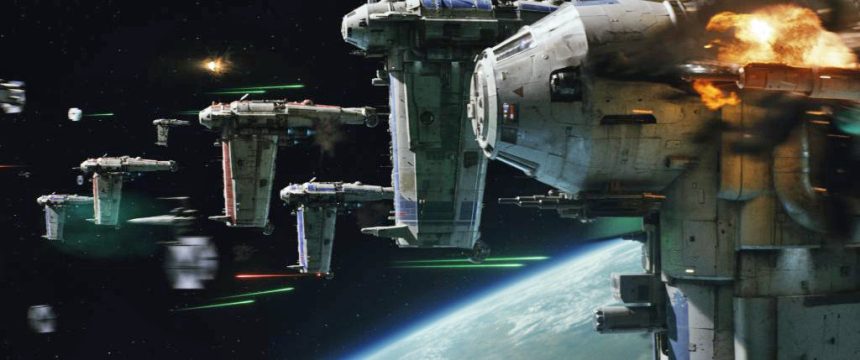Truth is Stranger Than Fiction, And the Inspirations for “The Last Jedi” Are Remarkable.
This article contains spoilers. If you have not seen “Star Wars: The Last Jedi” yet, you may find it better to stop reading this article here and come back later.
Hurtling toward the villain nation’s massive fortified Armageddon machine the hero-pilot has one chance, and one chance only, at hitting his target. Victory will mean one man will save his people, failure could mean a war that may lead to destruction of the planet. It is all or nothing, and this audacious attack could determine mankind’s survival.
It’s not a scene from writer/director Rian Johnson’s new film, “Star Wars: The Last Jedi”. That narrative is a dramatization of the real-world Operation Opera, the daring June 7, 1981 Israeli air raid on a nuclear reactor and atomic weapons fuel manufacturing facility at the Osirak nuclear reactor outside, Iraq.
This is just one example of art imitating air combat history in the new Hollywood blockbuster that hit theaters this past weekend and of nearly every previous film in the Star Wars series. Almost every intergalactic battle scene in the Star Wars films borrows heavily from actual air combat history. And if you are a fan of air combat history, some of the scenes in “Star Wars: The Last Jedi” may feel familiar.
Director Rian Johnson and the visual effects in “The Last Jedi” opened with a classic piece of air combat doctrine that has been seen many times in modern air combat. An attacking aircraft poses as performing one mission to deceive an enemy, act as a decoy and buy time before a secondary attack is launched. If this time-proven set of tactics sounds familiar, it is.
You may be recall the real-world tactics of “Wild Weasel” SAM suppression missions flown in Vietnam and Iraq. It may also bring memories of “Operation Bolo”, the audacious January 2, 1967 attack meant to destroy North Vietnam’s air force flown by USAF Colonel Robin Olds. Col. Olds’ F-4 Phantoms behaved like defenseless B-52 F-105 bombers over North Vietnam as decoys to lure enemy MiG-21s into attacking. When they did, Col. Olds’ fighters sprung their trap.
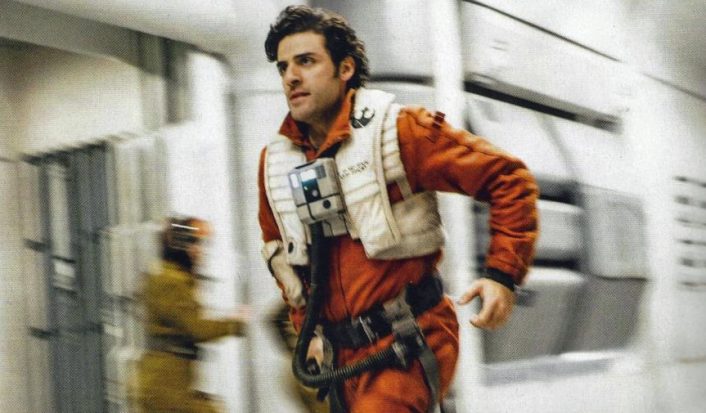
Another tactic shown in “The Last Jedi” was forcing an enemy, in this case the fictional “First Order”, to commit all of their air defense assets to an initial feint attack, thus revealing their sensors and depleting their ammunition before a larger, secondary attack is launched on the main objective. In the opening scene of “The Last Jedi” one X-wing fighter distracts and delays the giant enemy First Order battle spacecraft until it can effectively fly inside and below its defenses, then opens an initial attack, suppressing defenses and paving the way for the main rebel attack force.
Visual effects throughout “The Last Jedi” include inspiration from real world air combat of every era and from other air combat movies. It’s widely known that Luke Skywalker’s strike mission against the Death Star in the original “Star Wars”, where he pilots his X-wing fighter down a narrow mechanical canyon for a precision strike on the gigantic Death Star, was inspired in part by the 1964 Walter Grauman and Cecil Ford film about WWII Royal Air Force Mosquito pilots, “633 Squadron”. The cockpit of the Millennium Falcon spacecraft was inspired to the WWII B-29 bomber.
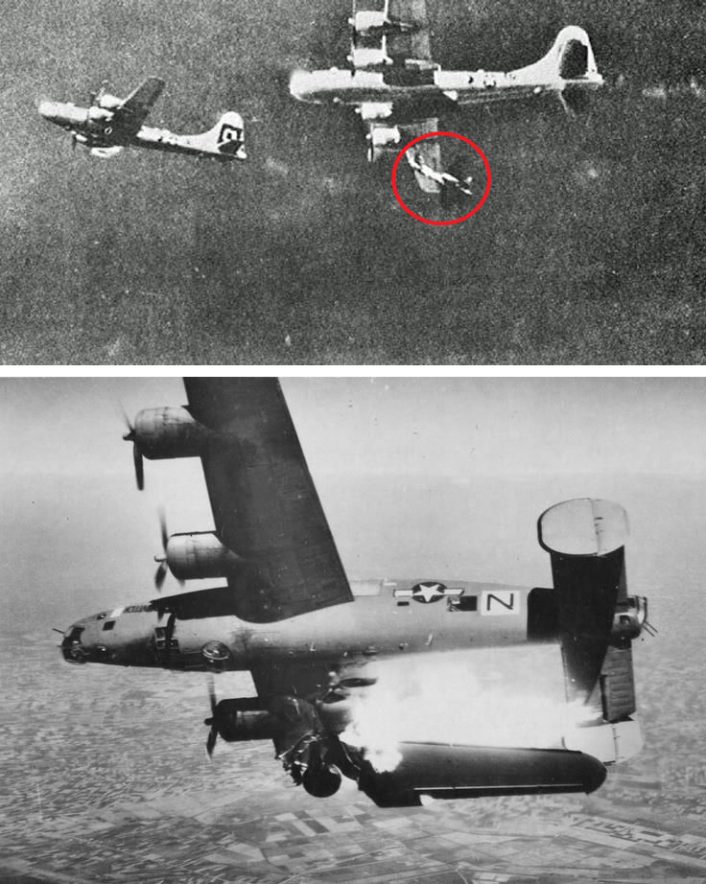
It is also rumored that George Lucas may have had inspiration from either visiting or seeing images from low flying training areas like the Mach Loop in Wales and especially the now-famous R-2508 complex now referred to even by the military as either the “Jedi Transition” or “Star Wars canyon” in Death Valley, California just outside the Nellis Test and Training Range.
Despite Director Rian Johnson’s often accurate inspirations from air and space combat, he does take liberal license with physics and reality in the “The Last Jedi”. Gravity is selective in the film. Gravity bombs fall down in space where there is no gravity. Spacecrafts fly in a symmetrical up and down orientation nonexistent in space, and combatants pass from space with no atmosphere into pressurized spacecraft. Some of the characters in “The Last Jedi” need a refresher from their officer training as well, as specific orders from commanders are executed selectively- and often disobeyed entirely. In the real world that offense that would lead flight officers a stint in the brig- look at how much hot water Iceman and Goose got themselves into in “Top Gun” just for buzzing the tower. Further departure from reality is seen with the gun-like weapons (as well as the above mentioned gravity bombs) used in place of long range stand-off weapons. But at the risk of being that annoying guy in the theater pointing out technical inaccuracies, these are the elements of fiction that separate meaty fantasy from the admittedly more accurate, and “dryer” plot lines of, for instance, a Tom Clancy story unfolding in a more rigid version of the real world.
Rian Johnson must have watched plenty of video of F-22 Raptor and Sukhoi Su-35 displays since the opening space-combat sequence in “The Last Jedi” shows X-Wing combat pilot Poe Dameron execute a very Sukhoi-esque horizontal tail slide to evade a pair of attacking First Order fighters.
The cockpits in the X-Wing fighters are a mix of new technology including advanced weapons sights and side stick controls and old tech like toggle switches that somehow seem more visually dramatic to flip than using a touchscreen like the new F-35 Joint Strike Fighter.
Speaking of the F-35 Joint Strike Fighter and its advanced onboard situational awareness and networking system, the BB-8 droid that accompanies X-Wing pilot Poe Dameron on his missions is really a mix of the F-35s advanced avionics including the Multifunction Advanced Datalink (MADL), the Active Electronically Scanned Array (AESA) radar and the Distributed Aperture System (DAS). These systems run aircraft diagnostics, keep the pilot informed about the aircraft health and tactical environment and help facilitate communications and systems operation through several command systems, in the case of the BB-8 droid on the X-Wing fighter, mostly using voice actuation.
Finally, if the large rebel bomber formation in the stunning opening battle scene in “The Last Jedi” feels visually familiar then you may liken it to footage and tales from the mass WWII bomber attacks over Germany and Japan by the allies, especially B-17 and B-24 strikes over Germany. The lumbering, mostly defenseless bomber stream attacks in tight formation under cover from X-Wing fighter escort, and suffers heavy losses. The bombers even feature a ball gun turret at the bottom of the spacecraft exactly like the one under a B-17 Flying Fortress.
Ball turret gunner Paige Tico becomes one of the first sacrificial heroes of “The Last Jedi” when she risks her life to release a huge stick of bombs in the last-ditch bomb run by the only surviving bomber in the opening attack on the First Order spacecraft. Paige Tico’s sister, Rose Tico, goes on to become a predominant hero of the film after she loses her sister in the heroic opening bombing raid.
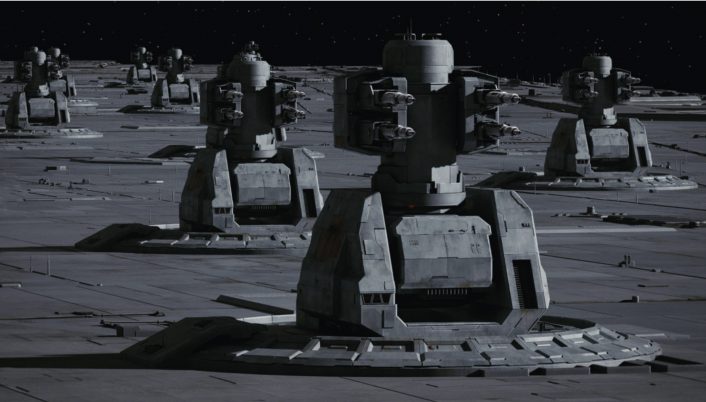
You may also sense that the giant First Order Dreadnought Mandator-IV-class warship in “The Last Jedi” felt familiar. Design supervisor for “The Last Jedi”, Kevin Jenkins, revealed that inspiration for the Dreadnought warship came from several sources that included the WWII Japanese battleship Yamato. The Dreadnought was armed with two enormous orbital autocannons for large-scale bombardments and 24 point-defense remotely aimed anti-aircraft cannons on its dorsal surface. Dreadnought is also an enormous space gunnery platform at 7,669 meters long, that is more than 25,162.8 feet in length. Imagine a strategic attack space aircraft five miles long.
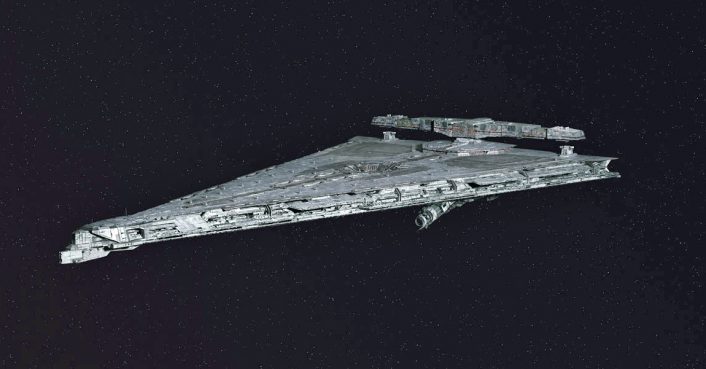
All great fiction, including science fiction, is rooted in inspiration from the factual world, and “Star Wars: The Last Jedi” borrows significantly from the real world of air combat technology, tactics and history to weave a thrilling and visually sensational experience. In this way this film, and in fact, the entire Star Wars franchise, lives as a fitting and inspiring ode to air combat past, present and future and serves to inspire tomorrow’s real-world Jedi warriors.
Top image credit: Lucasfilm.

